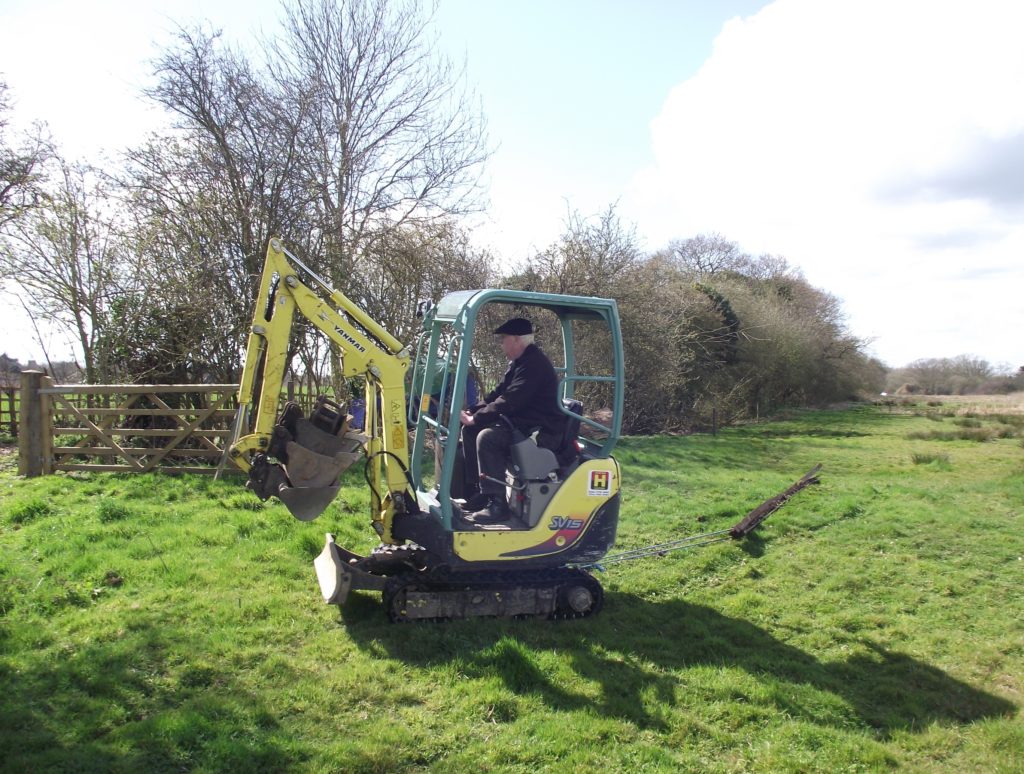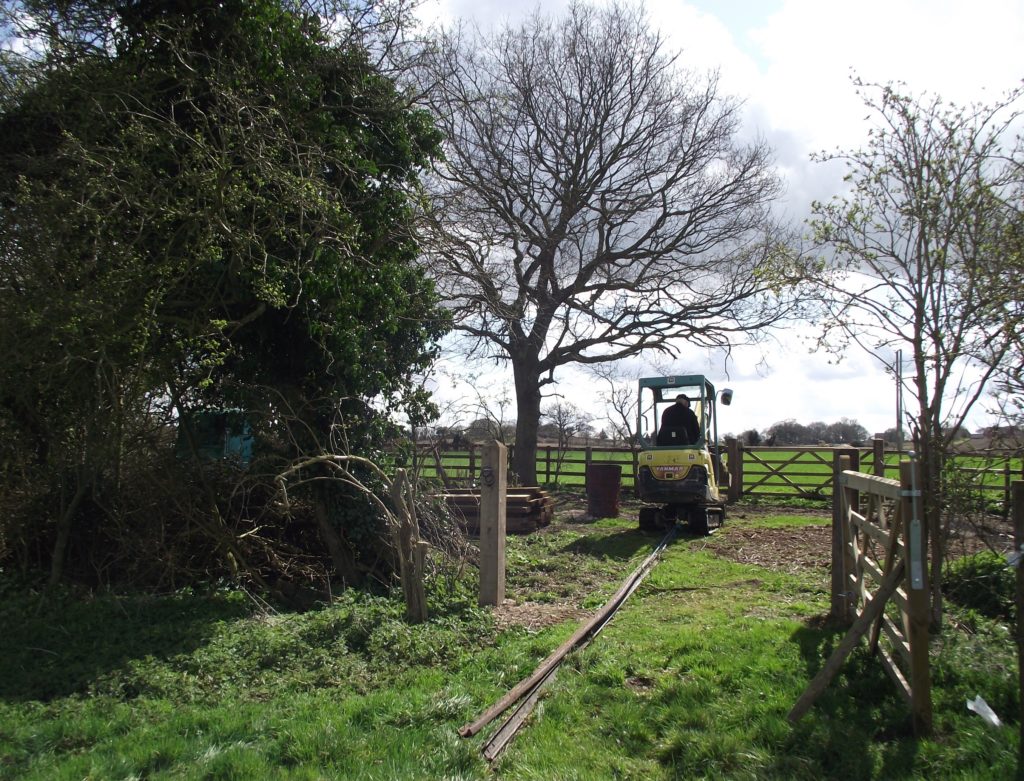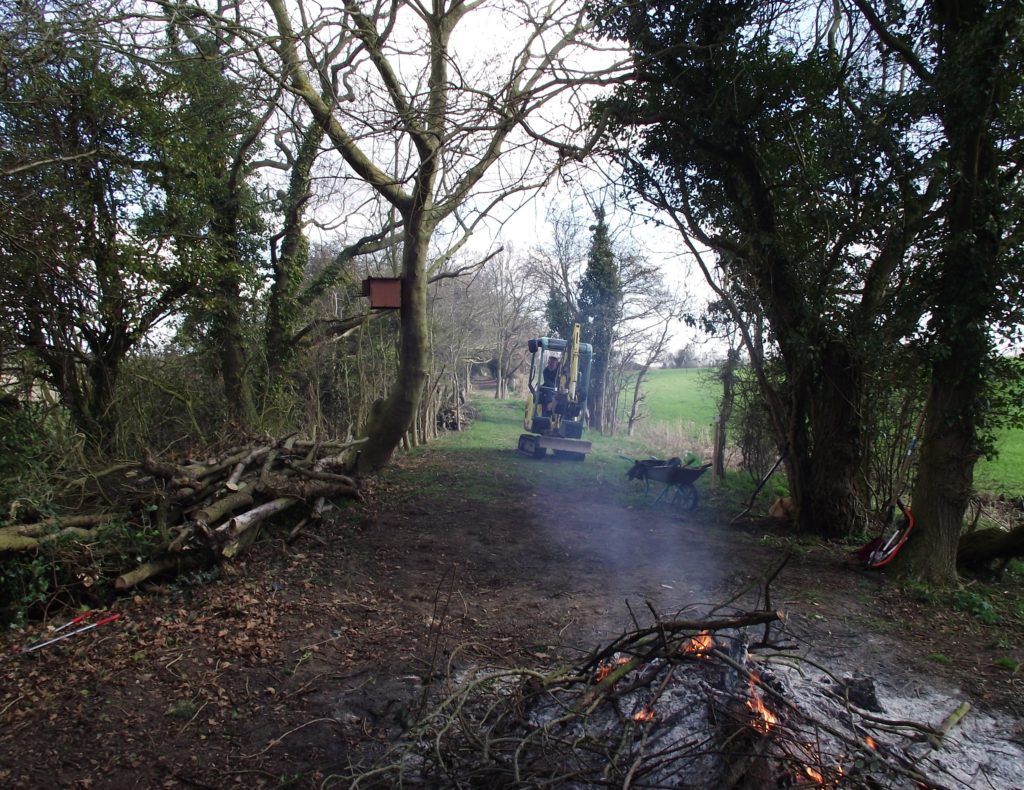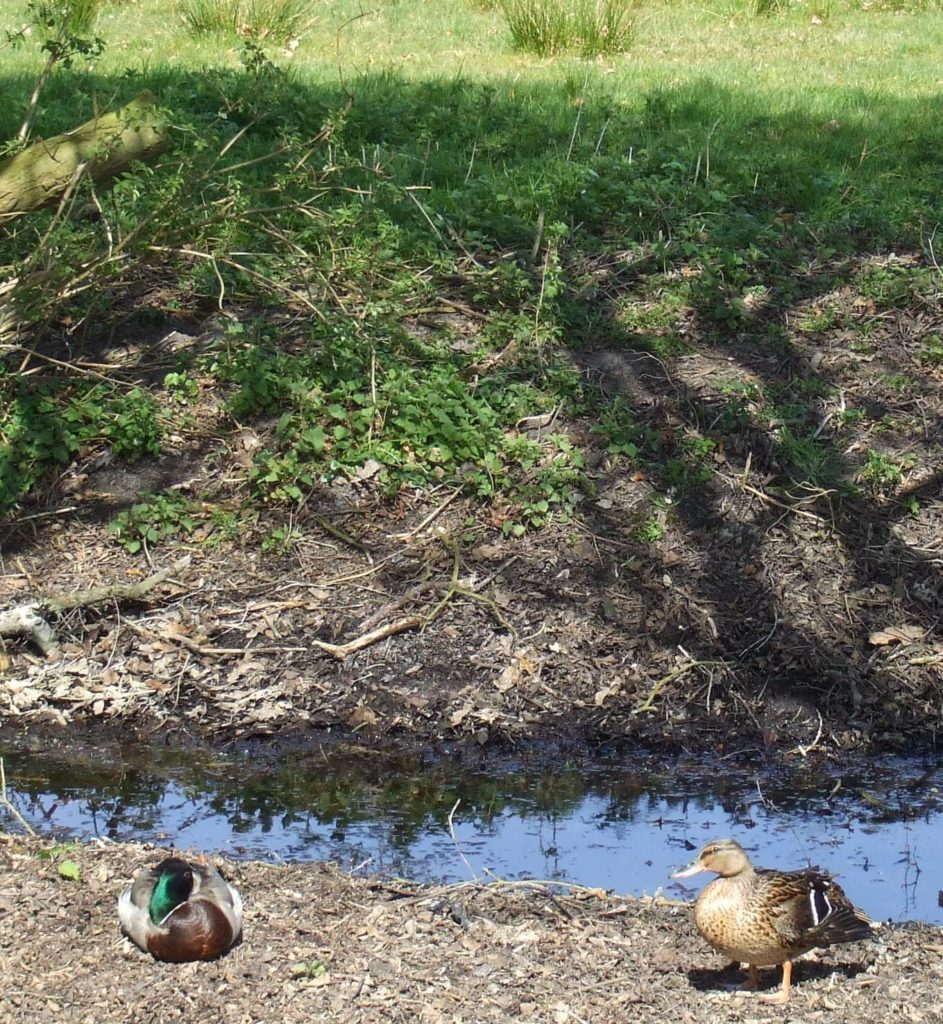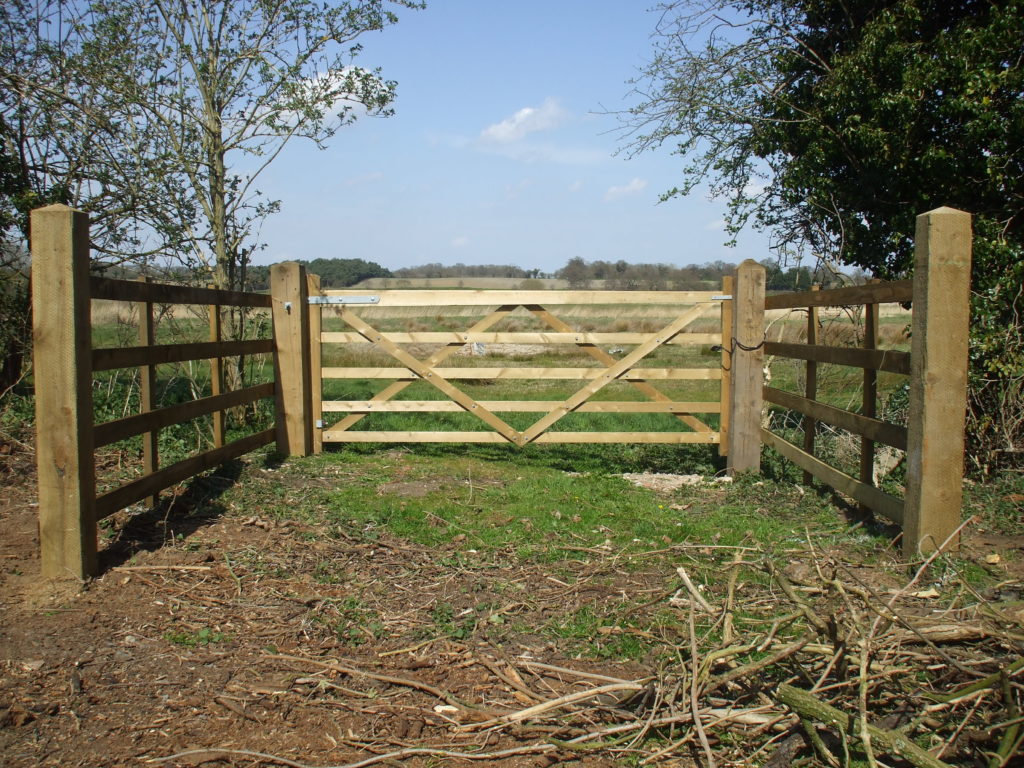
A large team of twelve enthusiastic volunteers split into two on Wednesday April 8th. Most (because of the good weather) went to Wenhaston, and carried on path clearance and SR fencing – while the rest continued with Motor Rail and Heritage Train tasks in Southwold.
Motor Rail work involved John H and James H in the usual cleaning, de-greasing, de-rusting and painting of the main chassis and bulkheads. John R carried on with the main and secondary electrical panels – he is now putting things back, a combination of original components where these are still good, and replacements where they are not usable. Bob spent much of the day on the wagon 41 axleboxes – these are now so clean that there is no need to get them gritblasted – a good thing, as they are somewhat fragile. He also cleaned all the bearings, ready for their replacement within the castings.
Wagon 41 underframe is now ready to go away, with all the metalwork separated into stillages, and bolts, nuts, washers, pins etc. stored, as we will replace most of them. To reduce weight, the headstocks have been removed as well – these are too short and at the wrong height anyway, and it’s one less job that we have to pay for. As is usual, measurements were checked to ensure that the longer axles and wider underframe is exactly the right size – the new axles, particularly, will be an expensive item, so we try not to get them wrong.
An interesting though ultimately frustrating job in the afternoon was to try to remove one of the high-tensile lock-nut bolts which hold the coupling assembly on – because the fan belts are impossible to remove (they need replacing) with this bolt in place. Naturally, as the entire loco is imperial, none of our sockets fitted exactly – and the bolt was immovable anyway. Then we tried a large adjustable – no good either. The various spanners and adjustables on the nut inside (almost impossible to get to) – no go. Then we thought of cutting off the protruding part of the bolt, up against the locknut, to allow (just) the belts to be removed and replaced. Access being as difficult as it is, no mechanical aid could be used. After half an hour of hard work with a padsaw, and seven or eight broken blades, we were about a mm into the bolt.
Then we thought of cutting the bolt head off, and pushing the rest through – but the pulley is much too close to make this possible.
At this stage we were imagining the Motor Rail engineers rubbing their hands with glee in the 1960s, having produced a loco on which the belts could only be replaced by removing the entire engine from the frames. Then we tried to undo the small bolts which retain the pulley – these will undo – a bit – but are (just) too long to be withdrawn (and of course none of the spanners fitted very well). Then we gave up, for the day, and will bring an enormous range of spanners, and some more energy, to the problem in a week or so.
Our day was only spoiled by hearing from Wenhaston that the police had been called by people complaining about our own charity volunteers working, perfectly legally, on our own trackbed. This has already been tried last year, when the District Council was called with the same allegations – which were then completely dismissed. We’re getting a little fed up with the constant carping we get from some quarters – we do not, after all, try to tell them what to do on their land! And we do sometimes wonder how much time they devote to their own chosen charity, and exactly why they hate ours so much, in contrast to the strong support we get from many local – including Wenhaston – people.
On Saturday April 11th, SRT started its second Mutual Improvement Week at Wenhaston. With another hire of the small 360 form Harford’s, we aim to finish as much as possible of the trackbed pathway grading, and the neatening-up of the piles of dead elm and brash still left from the previous winter’s work. There are a few more stumps to do – some very large indeed – and we will try slotting fence post holes to see if that is a practical way of getting them in: if it works, it will save a great deal of hand digging (about 45 holes, in fact).
Regular readers will know, by now, about my strange lineside fencing fetish – this was re-ignited when we found several original posts on the north side of the track (we have never had any evidence of this before): very oddly, these are placed on the railway side of the parallel drainage ditch, which seems both wrong and unnecessary. Another SR anomaly to add to all the others!
The environmental improvements are becoming obvious to local wildlife: a pair of mallards was enjoying the cleaner waterway and room to walk about and root – they seemed unafraid of the volunteers, working quite close.

